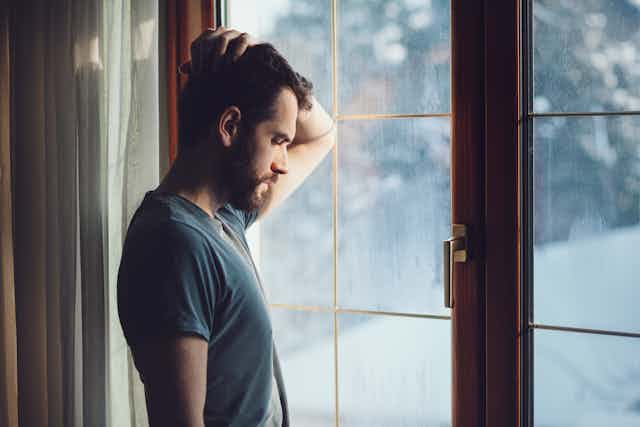A new bisexual character is to be introduced on the British television soap opera EastEnders. This is of course great news – while LGBT people more generally are receiving much more representation on TV, bisexuality is more rarely seen.
But when bisexual characters do appear on screen, they often fall into many of the classic stereotypes about bi people, such as that they are greedy, overly sexual, and unfaithful partners. Such portrayals only harm awareness about bisexuality and indeed contribute to the particularly bad mental health of many bisexual people, especially of bisexual men.
For example, the hit medical drama House features a bisexual character, Remy, or Thirteen as she is known in the show. Thirteen’s is portrayed as reckless and irresponsible; by her frequent one night stands with other women she is characterised as hypersexual, driven by an insatiable lust.
EastEnders has had a couple of bisexual characters before, but the show has not handled them in the most respectful of ways. Steven Beale, a previous bi character, did not have sexuality at the heart of his storyline: the writers instead focusing on his violence and mental health problems. In one episode, he kisses a woman, and later a man, all within the confines of a psychiatric institution.
This obviously does not send positive messages. While it’s true that bisexual people are more at risk than both straight, lesbian and gay people in terms of mental health problems, literally painting bisexual romance in a picture of mental illness is not a helpful way to portray bisexuality.
But this previous mishandling was over a decade ago. The writers now have a chance to start afresh with this new character, and in the context of one of Britain’s longest running soaps, it is no doubt a huge step forward simply for the visibility of bisexuality in mainstream culture.
The research
Positive bisexual representations are important because the stigma caused by negative portrayals impact bi people’s mental and even physical health. Bisexual men in particular are stigmatised; when compared with gay men, lesbians, and bisexual women, surveys show they are at the bottom of the pile when it comes to people’s attitudes about them.
Although we live in a patriarchal culture, men are viewed less favourably than women in this unusual instance. This is probably due to the fetishisation of bi women by straight men. There is a history in the media (particularly pornography) of performative bisexuality, where women engage in provocative acts with other women for the enjoyment of men. One study found that straight men’s attitudes are favourable to bi women compared with bi men, while straight women did not show a difference in attitudes between bi men or bi women (although both were still, unfortunately, negative).
Bi men are also rated less favourably due to the false belief that they are carriers of HIV that “spread” the disease to the “straight world”, a remnant of the homophobic discourse surrounding HIV/AIDS in the 1980s.
And this isn’t the whole story. Bisexual people are viewed less favourably by gay and lesbian people as well, meaning they face a double discrimination from both gay and straight communities. Numerous reports exist of bisexual people being sidelined in LGBT organisations, social clubs, and pride parades. Bi people often do not feel welcome in lesbian or gay spaces. Of course, the community has numerous lesbian and gay allies – but it’s important to note that discrimination by other lesbians and gays does exist and does impact the lives of bi people.

Mental health
All of these factors lead to poorer mental health for bisexual people. Bi people are often the most at risk in terms of health problems when compared with lesbian and gay counterparts. A recent study showed that bisexual men in particular are especially at risk because of poorer attitudes towards them, leading to more stigma, and worse outcomes, both in terms of physical health and mental health.
What’s more is that we know less about bi men than bi women, with a lot of research being done on the latter compared with the former. And according to Meg John Barker, a bisexual activist and academic who co-wrote guidelines for researching bisexuality, bi men are often grouped in with gay men in studies.
So, to return to the TV soap: here’s to hoping EastEnders will represent it’s new character in a way that sidesteps the stereotypes that have long plagued the bi community, not painting them as a hypersexual, incapable of monogamy, nor as their bisexuality serving as some sort of springboard to another sexual identity. Neither should they in any way associate bisexuality with any kind of mental instability.
More than that, I hope the show delves in to some of the complexities of living as bisexual, perhaps not feeling at home in either a gay club, nor in the Queen Vic. The show does have other LGBT characters, so it might be interesting to see how they react to this new face on the block. Will they be welcomed with open arms, or be treated with suspicion? It’s time for mainstream TV to do the bi community proud with this new character.

